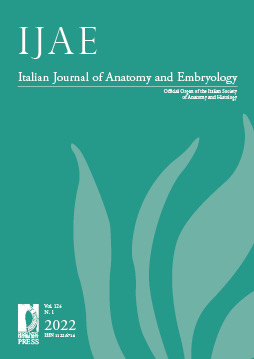Morphological variations of human pulmonary fissures: an anatomical cadaveric study in Sri Lanka
Published 2022-09-21
Keywords
- lung,
- variant,
- fissure,
- morphology,
- Sri Lanka
How to Cite
Abstract
The aim of this study was to identify morphological and morphometric variations of pulmonary fissures. A sample of 50 adult formalin fixed Sri Lankan cadaveric lungs (24 left and 26 right lungs) were observed with the help of magnifying glass and length measurements of the lung fissures were taken using a measuring tape. Complete oblique fissure was seen in 16 (66.67%) left lungs and 11 (42.3%) right lungs. Incomplete oblique fissure was seen in 8 (33.33%) left lungs and 15 (57.69%) right lungs. There was complete absent of horizontal fissure in 4 (15.38%) right lungs whereas rest of the 22 right lungs indicated incomplete horizontal fissure (84.61%). The mean lengths of the left oblique fissure, right oblique fissure and horizontal fissure were 26.88±5.88cm, 27.31±6.04 cm and 8.31±3.61 cm, respectively. Incomplete fissure was the most common variant of the fissures in the analyzed sample. There was a high prevalence of incomplete horizontal fissure of right lung followed by incomplete right and left oblique fissures. Absence of oblique fissure was not found in either left or right lungs. The mean length of right oblique fissure was slightly greater than the mean length of left oblique fissure. The knowledge lung fissures, indeed help clinicians and radiologists to identify alterations of the disease distribution and to reduce the misinterpretation of radiological modalities as well as to arrive at an accurate diagnosis with plan of management of a patient.


